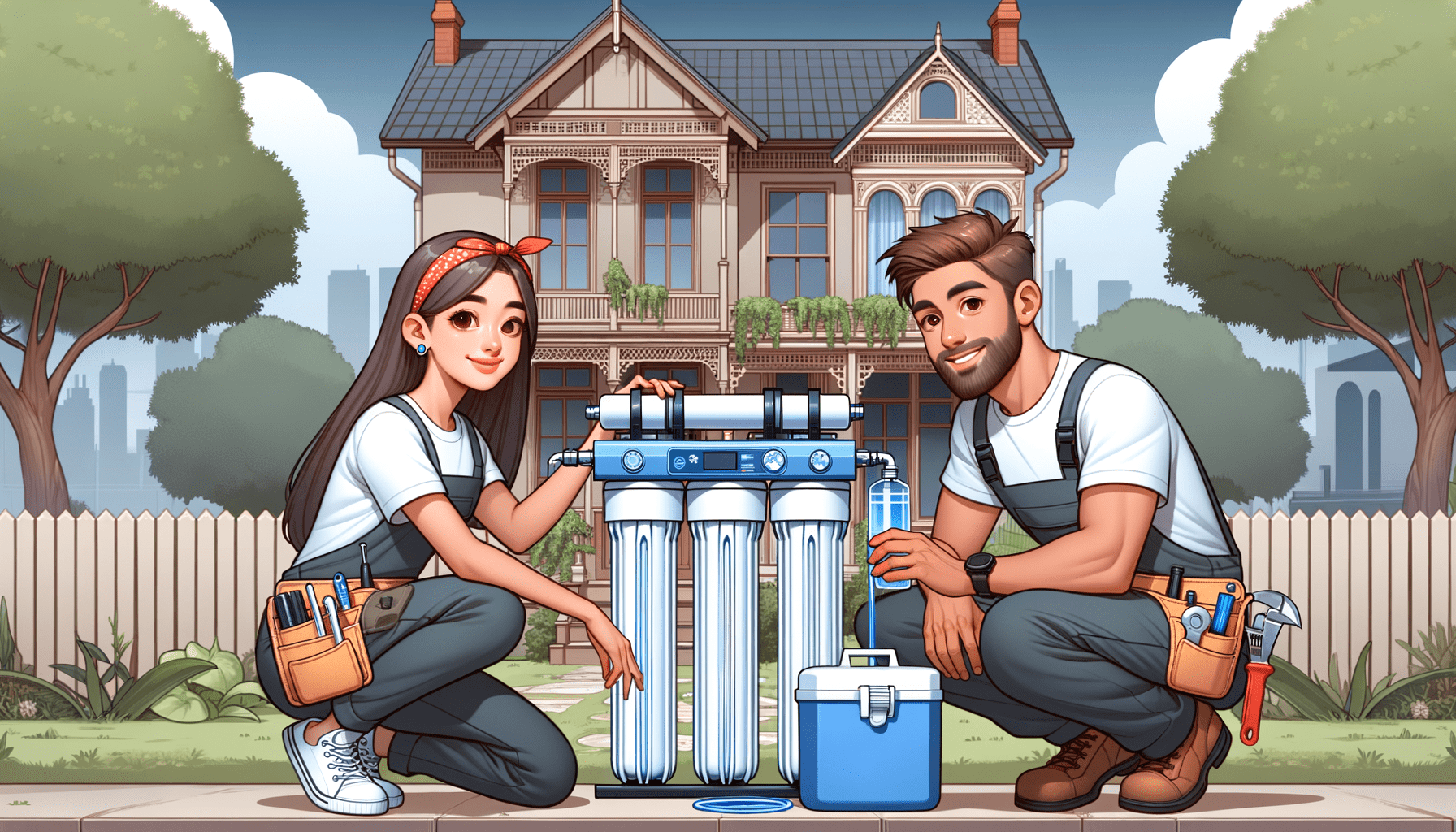Looking to optimize your water purification at home? You’re in the right place. Reverse osmosis filtration systems are gaining popularity throughout Australian homes for their ability to provide clean, pure drinking water straight from your tap. So let’s don our hard hats and delve into how our team at Dan’s Plumbing can assist you in installing one of these beauties.
Contents
- Briefing Before Installation Commences
- Tools Needed For Assembly
- Preparing Your RO System
- Installation Procedure: Step-by-Step
- Comprehending RO Installation Graphics
- Reversal Osmosis Schematic Unpacked
- Identifying Water Contaminants: Chromium
- Problem-Solving the Chromium Issue
- Comparing Whole-Home and Point-Of-Use Filters
- Sequential Steps: DIY Installation
- Troubleshoot: Recharge Your RO Tank
- Sharing Additional Resources
- Components of the RO Filter
- Wrapping Up the Installation
- Taking Stock
- Frequently Asked Questions (FAQ)
Briefing Before Installation Commences
To start off, installing a reverse osmosis (RO) system is a decision that requires planning and preparation. You should consider the space under your sink where the system will be installed and evaluate if there are any potential roadblocks like pipes or other plumbing parts.
It would also be beneficial to assess the water quality in your locality. The Sydney and Melbourne areas generally meet Australian Drinking Water Guidelines but specific local factors such as pipe quality and environmental pollution could necessitate the use of an RO system in some households.
No worries if you’re not sure about these analysis, our experienced plumbers are here to help with all your queries. We advise and work collaboratively with homeowners to ensure the system fits into their homes seamlessly.
Did you know? According to IBISWorld report, the plumbing industry in Australia is a massive, resilient market valued at $17 billion in 2020, providing Australians access to top notch plumbing services like ours.
Tools Needed For Assembly
In preparation for the installation, make sure the following more common tools are ready: a pipe cutter (for PVC), adjustable wrenches, pliers, a drill with assorted bits, and plumbers’ tape. From experience, we advice our clients to have these ready as they aid in ensuring a smooth and efficient installation process.
Let’s get crafty: always remember to have all your tools in tip-top condition. This not only enhances their performance but also increases their lifespan – they’re an investment after all!
Assembly kits for reverse osmosis systems usually come with specialized tools needed specifically for the task. This is inclusive but not limited to spanners, connectors/valves, Teflon tape, among other things.
We understand that not everyone might be handy or have these tools readily available. However, fret not! At Dan’s Plumbing, we are always equipped with the necessary tools to provide efficient services.
Preparing Your RO System

Now that you’ve got your toolkit sorted, let’s move on to preparing the RO system itself. Begin with unpacking all parts from the package and familiarize yourself with them. Always ensure you cross-reference with the list provided to avoid any missing items before commencing on installation.
You’d be surprised that most RO System packages come with an Air gap which is integral in avoiding back flow of water into your purified water supply if there should be a leak. This proves the thorough planning done by manufacturers in reducing any risks involved during operation of the device.
Beware of any damages or defects on arrival of your RO system – it’s better safe than sorry! Australian Quality Assurance will assure you of a replacement but early detection can save you time and unnecessary frustration.
In the process of assembly, handle your semi-permeable membrane with care. This is the part of the system that removes contaminants from the water and ensures you get crystal clear drinking water from your tap.Making sure no wrinkles or creases form on this membrane will guarantee its long term performance.
Installation Procedure: Step-by-Step
Function before aesthetics; installation of an RO system is not as intimidating as it looks. By following the procedure correctly, you’ll have a functioning system in no time.
We always recommend reading through the entire manual before beginning work, this guarantees you understand each step in context. Remember, every system varies slightly so it’s essential to adhere to your specific manual’s instructions.
Installation begins with turning off your cold water line and drilling a hole in the sink drain pipe for the RO system’s waste line. Identify where you want your RO tap on your sink and drill accordingly.
Carefully attach the system to your kitchen wall or inside your sink cabinet, making sure it’s comfortably accessible for future filter changes. Finally connect your water source to the new filtration station and voila! You have a functioning reverse osmosis system at your service.
Comprehending RO Installation Graphics
Fascinating how we can visually represent complex ideas, isn’t it? Understanding an RO Installation graphic is essential when setting up a reverse osmosis filtration system.
The key factors depicted in these diagrams usually consist of the inlet valve attached to the cold water supply, drain saddle that links up with discharge pipe leading to drain pipe, pre-filter chambers which include sediment filter and/or carbon filters alongside post-filter chamber.
You’ve got it right, mate! The diagrams also highlight pressure tank – a key component in storing filtered water ready at all times for use at your command from your RO tap.
To grasp a comprehensive understanding of these diagrams, we suggest taking a few moments to familiarize and study them in detail. Panic not; remember, Dan’s plumbing is here to assist and guide you through this process.
Reversal Osmosis Schematic Unpacked

Ah, the heart and soul of the RO system – the schematic! It represents the part of your RO filtration system that truly does the heavy lifting in delivering pristine drinking water.
The Reverse Osmosis Schematic consists of several stages including a pre-filter phase with activated carbon filters, a semi-permeable membrane, and a post-filter stage. The outcome? Water free from substantial dissolved solids and numerous contaminants.
Impressive, right? According to Australian environmental science studies, reverse osmosis systems can remove up to 99% of all contaminants, including sediment, chlorine, lead, fluoride, and other dissolved minerals from water.
Rest assured that quality drinking water is fundamental for us Aussies! Given our lifestyle choices and sunny climate, maintaining good hydration should be a priority. Pair this requirement with clean, filtered water straight from your tap, it seems like a no-brainer.
Identifying Water Contaminants: Chromium
An important factor for seeking purified water is removing certain harmful elements. Let’s take a closer look at Chromium. Naturally occurring, but it can be harmful when consumed in large quantities through water.
The total dissolved solids (TDS) level in your water should be tested as it plays major role in how effective your RO system will be at filtering out contaminants like Chromium. With hard water found in various regions across Australia experiencing over 200 mg/L of hardness levels, an RO System proves effective.
Water quality testing is an elementary skill for our plumbers. Dan’s Plumbing ensures before the installation of your filtration system, your water source is rigorously tested for common contaminants and potential pollutants.
We hold arsenals equipped with advanced techniques, tools and most importantly, knowledge! We are determined to provide you with a reliable and efficient solution with reverse osmosis filtration systems. Strive with us towards a healthier lifestyle!
Problem-Solving the Chromium Issue
In recent years, water processing methods have gained popularity worldwide due to their effectiveness in combating the hard chromium issue. As we are aware, chromium, a heavy metal, can affect tap water quality and pose health risks. Sydney and Melbourne homes often face this concern, with some areas experiencing water hardness levels of over 200 mg/L.
Fortunately, a Reverse Osmosis (RO) Filtration System offers an efficient solution. According to “Et Pure Water,” RO systems can remove up to 99% of all contaminants from drinking water, including sediment, chlorine, lead, fluoride, and other dissolved minerals.
This comprehensive efficacy positively impacts the taste and safety of your water supply, making it worthwhile for homeowners dealing with hard water issues. Compared to other water softening processes such as ion exchange or lime softening that might involve chemical usage or create further wastewater problems, RO systems are much more environmentally friendly.
Thus, if your home’s tap water contains an excess level of chromium or other contaminants, installing an RO system could be an ideal solution. Not only would this improve your drinking water’s quality but also help in maintaining your plumbing system in the long run.
Comparing Whole-Home and Point-Of-Use Filters

The two main types of RO systems to consider are Whole-Home and Point-Of-Use Filters. Deciding between these depends on your household’s specific needs and where you want your purified water supply.
A whole-home system purifies all the incoming water entering the house. This means that every tap —from kitchen sink taps to bathroom showerheads— delivers filtered water. A significant advantage here is that it protects plumbing fixtures from potential damage due to hard or contaminated water.
On the other hand, point-of-use systems are installed at specific water outlets, such as under the kitchen sink. These systems purify water at individual points and are ideal if you’re only concerned about drinking and cooking water quality.
Sequential Steps: DIY Installation
Although seeking professional help like Dan’s Plumbing is advisable for RO system installation, some homeowners might prefer a DIY approach. Here are sequential steps to install an under-sink RO system yourself:
-
Familiarise Yourself with Components
- Before starting the installation, understand what every part of the RO system does.
-
Choose the Installation Spot
- Knockout a sink hole if needed or use an existing one for your tap.
-
Install Tap & Adapters
- Ensure you follow proper plumbing guidelines while doing so.
-
Mount & Connect System
- Use manufacturer-provided templates as per provided instructions, connect pipes correctly and install filters in the right order.
-
Flush System
- This step is crucial in ensuring that your system functions well.
Troubleshoot: Recharge Your RO Tank
After installation, maintaining your RO system is of paramount importance. Regularly inspect your system for any leaks or loose connections. In case of a decrease in water pressure or a full tank that feels light, it might be time to recharge your RO tank.
Before servicing the tank yourself or calling Dan’s Plumbing for help, turn off your water supply and open the RO tap to drain any excess water.
You’ll then need to ensure proper air pressure in the tank. Using a bicycle pump or compressed air source, set the pressure between 5-7 psi when checking with a tire pressure gauge. Once done, reconnect your system and turn the water supply back on.
If you still experience issues, it’s best to involve professionals like Dan’s Plumbing to assess if your system’s membranes need replacing or cleaning. Remember, a regular maintenance schedule ensures optimum system performance and an uninterrupted supply of pure, tasty water.
Sharing Additional Resources

In our endeavor to help homeowners understand their plumbing and how an RO system can affect it, we want to share additional resources with you:
-
“Household Water Treatment Guide,”
by the World Health Organization
- This guide provides in-depth details on household water treatment and safe storage solutions.
-
“Reverse Osmosis Systems – A Consumer’s Guide,” by NSF International
- This guide is beneficial for anyone interested in learning more about how reverse osmosis systems work.
Components of the RO Filter
An RO system has multiple components each performing a distinct role,
-
Pre-filters:
These remove sediment and chlorine, thus protecting the RO membrane from damage.
-
RO Membrane:
This semi-permeable membrane rids water of tiny impurities, including harmful metals and chemicals.
-
Post filters:
They act after the RO process to remove any remaining taste or odor.
-
Drain line:
This is the conduit for wastewater or brine, led straight into your home’s drain system.
-
Tap:
The point of delivery of the filtered water.
Remember, all these components require regular service and maintenance for a smooth operation of your RO system.
Wrapping Up the Installation
The installation process culminates with a wrap-up. Check all connection points for leaks and ensure that the system is working as expected. Note that fresh RO systems might produce cloudy water due to trapped air in the system. Don’t worry, this will clear up with use.
At Dan’s Plumbing, we thrive on customer satisfaction. Not only do we offer professional installation services, but we also provide maintenance and repair services, ensuring longevity and efficient working of your RO system.
Taking Stock
To conclude, installing a reverse osmosis filtration system at homes in Sydney or Melbourne can significantly improve tap water quality by removing harmful contaminants like chromium. Whether you choose a whole-home filter or point-of-use system depends on your specific needs and budget. Although DIY installation is possible, seeking assistance from professional plumbers like Dan’s Plumbing ensures correct fittings and reduced risk of potential damages.
Frequently Asked Questions (FAQ)
Can I install an RO system myself?
Yes, you can. Most systems come with a comprehensive guide that provides step by step instructions. However, if you’re unfamiliar with plumbing or lack the necessary tools, it might be better to call a professional like Dan’s Plumbing.
How often do I need to change the filters in an RO system?
You should replace pre- and post-filters every 6 to 12 months, depending on water usage and quality. The RO membrane usually lasts two to five years.
Do RO systems waste a lot of water?
Some water is flushed to drain during the purification process to remove salts and impurities. However, recent models are quite efficient and the waste has significantly reduced.
Does a reverse osmosis system remove beneficial minerals too?
Yes, an RO system does remove some beneficial minerals along with contaminants. However, these minerals are often available from other dietary sources.
What’s the difference between a whole-house RO system and an under-the-sink RO system?
A whole-house RO system provides purified water to all the water outlets in the house, while an under-the-sink RO system only purifies water at the particular sink where it’s installed.
- How Do I Know When It Is Time to Replace a Cracked Porcelain Sink? - November 14, 2024
- What Should I Do If My Water Meter Is Spinning Unexpectedly Fast? - November 14, 2024
- Can a Plumber Help Me Replace a Leaking Garden Tap? - October 14, 2024
Related posts:
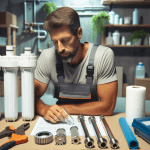 Can a Plumber Help Me Install a Whole House Water Filter?
Can a Plumber Help Me Install a Whole House Water Filter?
 How Do Plumbers Locate Hidden Water Leaks in Australian Homes?
How Do Plumbers Locate Hidden Water Leaks in Australian Homes?
 Can Your Plumbers Help Me Install a Dishwasher?
Can Your Plumbers Help Me Install a Dishwasher?
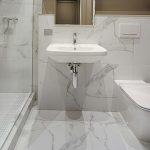 Can a Plumber Help Me Install a Water-Saving Toilet in My Older Melbourne Bathroom?
Can a Plumber Help Me Install a Water-Saving Toilet in My Older Melbourne Bathroom?
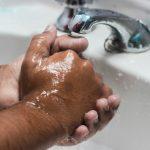 Can a Plumber Help Me Install a New Bathroom Tap?
Can a Plumber Help Me Install a New Bathroom Tap?
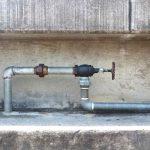 Can a Plumber Help Me Install a Backflow Prevention Device, And What Are These For?
Can a Plumber Help Me Install a Backflow Prevention Device, And What Are These For?

